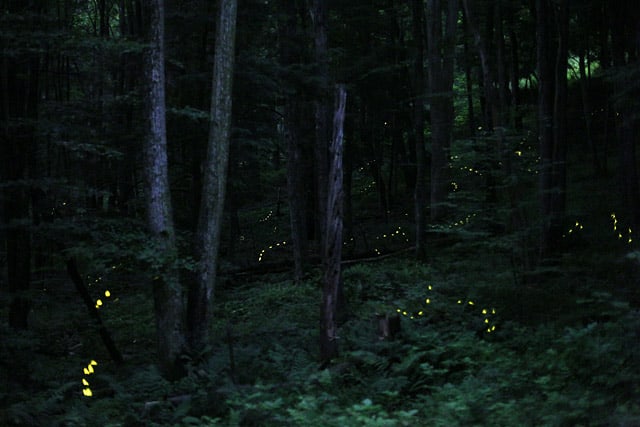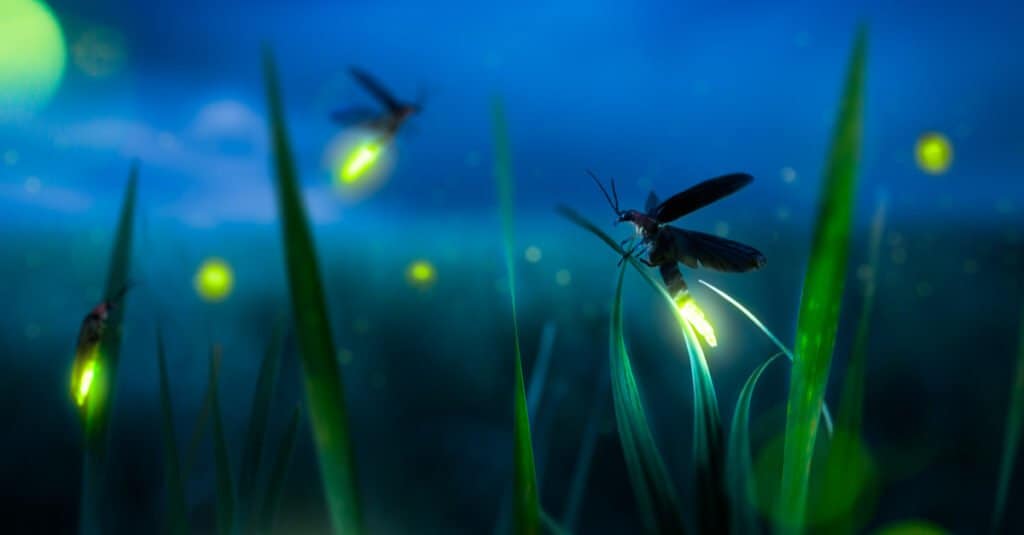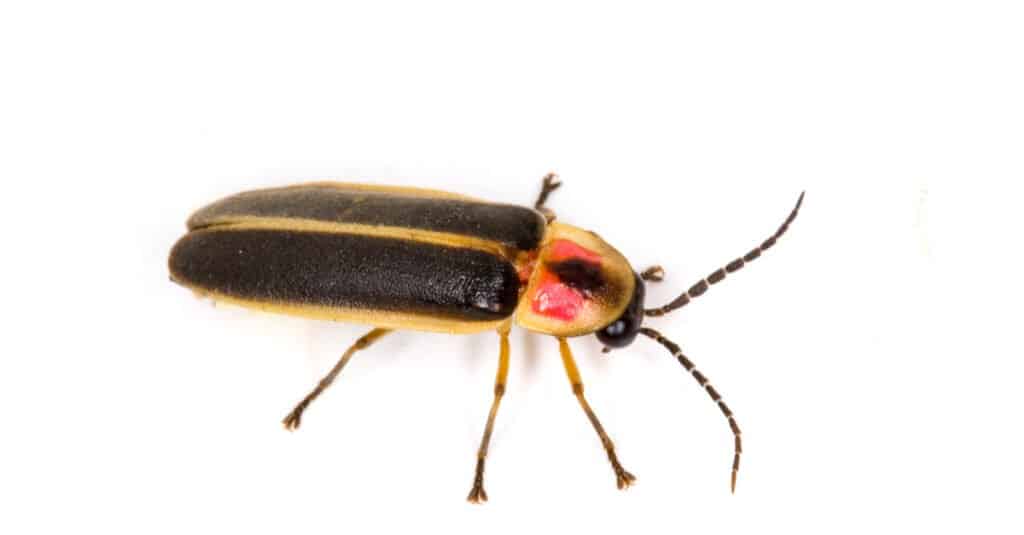You probably didn’t know this, but California is home to 18 species of fireflies. Many western species of fireflies do not produce light; instead, fireflies found on the West Coast are active during the day and communicate with pheromones rather than light.
Fireflies
Fireflies are nocturnal members of Lampyridae. Lampyridae is the family of insects within the beetle order Coleoptera or winged beetles. Beetles are different from bugs because they have four wings. There are more than 2,000 described species, most of which are light-emitting. These soft-bodied beetles call themselves fireflies, lightning bugs, or glowworms for their conspicuous light production. Mainly during twilight to attract mates.
These insects live in habitats with more temperate regions and are a homey, lovely sight on summer evenings. Fireflies love moisture and live in the humid parts of Asia and the Americas. In drier areas, you will find them around the only damp areas that retain moisture. Fireflies produce “cold light” with no infrared or ultraviolet frequencies. This chemically produced light comes from the insect’s lower abdomen, and the light they give off may be yellow, green, or pale red with wavelengths from 510 to 670 nanometers.

Synchronous fireflies
©Firefly Photos by Radim Schreiber; FireflyExperience.org / CC BY-SA 3.0 – License
Fireflies are fascinating creatures. These bugs produce their glow through bioluminescence. These insects have an organ that mixes chemicals and gasses to create light, and the bugs control how long and how often they glow. Usually, an insect that draws attention to itself invites other insects to eat them, but fireflies produce a chemical that makes them distasteful to their predators. The firefly glow warns them off from animals that might consider the firefly a snack. The Larvae firefly also produces light to protect themselves from predators.
Fireflies also use this light to attract their mate, but not all fireflies glow in California. Just because California fireflies don’t glow doesn’t mean they are all bachelors. California fireflies use their pheromones to attract a mate.
Firefly expert Marc Branham of the University of Florida in Gainesville says 18 known species of fireflies exist in California, compared to 56 species in Florida and 2,200 described worldwide.
In general, fireflies prefer wet habitats with their favorite food snails and you can find them in springs, seeps, and streams in Southern California.

Fireflies are a welcome and beautiful sight to behold in the spring and summer.
©Fer Gregory/Shutterstock.com
Types of Fireflies in California
These are some of the known species of California fireflies per The California Beetle Database. There is not much information on fireflies in California because they are so rare and don’t give off light.
Brachylampis blaisdelli
You can find the species Brachylampis Blaisdell in the family Lampyridae in North America.
Ellychnia californica
This firefly is in the species Lampyridae from North America and is generally known as the California glowworm or western firefly.
Microphotus augustus
Microphotus Augustus is a nocturnal glowworm firefly found in California and other areas of the southwestern US into Baja California and Sonora, Mexico. This firefly’s full extent of range is widespread throughout the core of its content in California. No threats to this species are documented. However, potential hazards include habitat loss and degradation, light pollution, and pesticide use. In addition, light pollution can interfere with the bioluminescent courtship signals of the female firefly, which has cascading effects on population size and health.
Nelsonphotus aridus
Five sites report seeing this poorly understood fir in the Sonoran Desert of Southern California and Northern Mexico.
Very little about this firefly has been published about its life history, habitat requirements, distribution, or popular trends. This species has only been found in Southern California in San Diego and Riverside counties and Sonora, Mexico. Only five localities have been described, four of which are in California and the species.
Paraphausis sp.2
You can find the species Paraphausis sp.2 in the family Lampyridae in North America.
Pterotus curticornis
The glowworm Pterotus curticornis locates itself in southern California and one locality in northwest Texas. Little about this bug is understood in terms of population size, although it is reported the little bug is infrequent. Additionally, information about its habitats and ecology needs to be included. Like other glowworms, females are likely to be either brachypterous or wingless, emitting pheromones and a glow to attract non-luminous male mates. Trampling of the flightless females is a potential threat, and the bugs are likely restricted to ground-level habitats. Research on distribution, population size, habitats, ecology, and possible hazards is needed to better inform the conservation status of this rare species.
Pterotus obscuripennis
Pterotus obscuripennis, commonly known as the Douglas fir glowworm, is a firefly species in the beetle family Lampyridae. This firefly found in North America shows that adult males are smaller in size, alate, capable of flight, have an elaborate antenna morphology, and are non-luminous. Their size is 9.5-12.0 mm, and their habitat is chaparral or foothills. These bugs do not produce light. Adult females are larger than the males at about 25 to 35 mm and are cream to light golden brown and luminous with photo organs on the seventh and eighth abdominal segments. Larvae are mainly black with cream-to-white coloration in the spaces between the body segments. These insects are also luminous and predatory to slugs.
Where in California to See Fireflies
Despite popular belief, California hosts an array of fireflies behind its borders; they don’t glow, glow only faintly, or glow only in the larval stage. These bugs prefer Southern California over Northern. You can see these luminescent beetles in the Santa Monica Mountains and the Laguna Mountains in San Diego. You can also find fireflies on the southeast slope of Mt. San Jacinto and upper Lytle Creek in San Bernardino County. Generally, fireflies prefer wet, humid habitats that support their favorite food, snails. In California, you can find a few species in ponds, springs, seeps, and streams.

isolated firefly
©Elliotte Rusty Harold/Shutterstock.com
When Can You Expect to See Fireflies in California?
Fireflies are a type of beetle, and these bugs share a relationship with the weather that goes deeper than the summer solstice. Their larvae live underground during winter, mature during spring, and then emerge in early summer, anywhere from the third week in May to the third week in June.
Fun Facts about Fireflies
- These bugs have strange eating habits. These bugs are predatory insects and feast on slugs, worms, and snails. Once they grow up, some fireflies turn to cannibalism and eat other fireflies. However, for the most part, they live on pollen and nectar (While some might not even eat anything in their short lifetimes.)
- Predators think they taste disgusting. Firefly blood contains luciferase, which tastes yucky. Predators associate the awful taste with the firefly light and learn not to eat the bugs that glow.
- Fireflies are neither flies nor bugs. They are beetles and produce what scientists call “cold light.”
- In some places, at times, fireflies synchronize their flashing.
- Firefly light can be orange, yellow, or green.
- Firefly larvae glow. Even some larvae live underground or underwater sources. Fireflies use their light to communicate to predators that they do not taste good (they produce unpalatable defensive steroids for protection).
- Fireflies produce light by a chemical reaction within the firefly’s light organ. Oxygen combines with calcium and adenosine triphosphate. This creates ATP- the energy-carrying molecule of all cells, and a chemical called luciferin.
- Light from fireflies is the most efficient light in the world. In a chemical reaction, 100 percent of the energy produces light.
- Luciferase from firefly light has proven helpful in scientific research, food safety testing, and forensics. For example, it can figure out levels of ATP in cells.
- When luciferase was first discovered, fireflies were the only way to obtain the chemical. Synthetic Luciferase is available, but some companies still harvest fireflies, possibly contributing to their decline.
- Other factors contributing to firefly decline include light pollution and habitat destruction. If a meadow where fireflies live paves over, they don’t migrate to another area; they die.
How Many Types of Fireflies are in California and do they flash?

Synchronous fireflies in Pennsylvania are known for their bioluminescent characteristics, which the California species does not exhibit.
©Firefly Photos by Radim Schreiber; FireflyExperience.org / CC BY-SA 3.0 – License
California fireflies, also known as lightning bugs, are not as abundant as the varieties found on the East Coast, in states like Florida, where you can find around 56 species. Additionally, they are also not known for their incredible nighttime light show, as this is a characteristic that is found in fireflies east of the Rocky Mountains.
Of the over 2,000 species, this west coast locale is home to around 19 species, which include an as-yet-to-be-named species, discovered in recent years by graduate student Joshua Oliva. This new species is rather small, only about half a centimeter long, and faintly glows. While these West Coast lighting bugs may have a faint glow, many of them do not exhibit these bioluminescent characteristics.
The photo featured at the top of this post is © Suzanne Tucker/Shutterstock.com
Thank you for reading! Have some feedback for us? Contact the AZ Animals editorial team.






